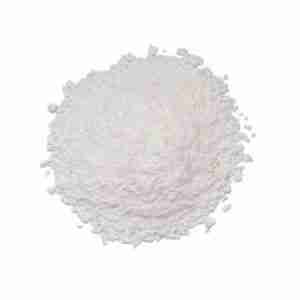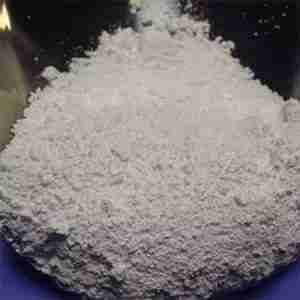Salicylic acid Typical Properties
Product name
Salicylic acid
Synonyms
2-hydroxybenzoic acid;acidum salicylicum;acetylsalisylic acid imp c;acetylsalicylic acid impurity c;fema 3985;salicyclic acid;salicylic acid;retarder tsa
Cas
69-72-7
MF
C7H6O3
MW
138.12
EINECS
200-712-3
Product Categories
Chemical products-organic solvents; Auxiliary agent; Chemical products-inorganic chemical industry; Pesticide intermediates; Pesticide intermediates; Organophosphorus insecticides; Disinfection and antisepsis drugs; Other veterinary drug standards; Small molecule inhibitor; Acid; Organic chemistry; Standards and reference materials; Medical raw materials; Organic acids; Antipyretic and analgesic; Raw materials; Melting point standard; Plant biochemical extract; Carbonyl compounds; Traditional Chinese medicine reference substance; Reference substance, standard substance; Plant extracts; Reference substance; Pharmaceutical intermediates; Standard products; Synthetic anti-infective drugs; API; Medicinal auxiliary materials; Medicine and chemical industry; Other raw materials; Other biochemical reagents; Acid agent; Organic chemical raw materials; Intermediate; Inorganic chemical raw materials; Inorganic salts; Antioxidants; Chemical products-organic chemical industry; Organic chemical raw materials;
Melting point
158-161 °C(lit.)
Boiling point
211 °C(lit.)
Water solubility
1.8 g/L (20 ºC)
storage temp.
Store at RT.
form
powder
Brand Name
Fousi Chemical
Salicylic acid Chemical nature
Salicylic acid is also known as salicylic acid. It is more acidic than benzoic acid. It turns darker in sunlight. It turns into a purple-red chelate when it meets iron ions. It reacts with ferric chloride and turns purple. It is not stable to heat. ℃ is easy to decarboxylate to generate phenol.
In nature, salicylic acid is mostly present in birch bark oil in the form of methyl esters, and the content can reach 96%. It is also found in cinnamon oil, violet oil and wintergreen oil.
Only a small amount of free salicylic acid is present in plants. Salicylic acid has the duality of phenol and carboxylic acid. It sublimates when heated, and decomposes to produce phenol and carbon dioxide when heated rapidly. React with sodium hydroxide, the hydroxyl and carboxyl groups are neutralized to form double salt;
But when it reacts with sodium carbonate, only the carboxyl group is neutralized to form a single salt. When it reacts with alcohol or phenol, it can generate corresponding salicylate; when it reacts with carboxylic acid or anhydride, it can generate corresponding carboxylic acid ester. This product is toxic, irritating the skin and mucous membranes, and can react with the protein in the body tissues, so it is corrosive. On the other hand, it can be sterilized. Rat oral LD501100~1600mg/kg. Storage is stable, but mixing powder with air can cause explosion.
Industrially, it is produced by the reaction of sodium phenolate and carbon dioxide under heating and pressure (Kolbe-Schmitt reaction). Firstly, phenol is neutralized with sodium hydroxide to generate sodium phenolate, and then at 4~7×105 Pa (4~7 Under atmospheric pressure), carbon dioxide is absorbed at 125°C to generate phenyl sulfonate, which is rearranged to generate sodium salicylate and acidified to generate salicylic acid.
Salicylic acid Usage
Salicylic acid, also known as o-hydroxybenzoic acid, is an important raw material for organic synthesis. In the production of pesticides, it is used to synthesize the intermediates of organophosphorus insecticides hydrocarbophos and methyl isofenphos, isopropyl salicylate, and the rodenticides Shafarin and rodent ether intermediates 4-hydroxy Bean; in the pharmaceutical industry, salicylic acid is used as a disinfectant and antiseptic, but also as an intermediate of acetylsalicylic acid (aspirin) and other drugs; it is also an important raw material for dyes, fragrances, rubber and other industries
The pharmaceutical industry is used to make antipyretic, analgesic, anti-inflammatory and diuretic drugs, the dye industry is used to make azo direct dyes and acid mordant dyes, and also used in spices, etc.
It is mainly used as the raw material of aspirin medicine and the raw material of products such as pesticide hydrocarbophos. It can also be used in the dye industry, refined chemical reagents, etc.
In the pharmaceutical industry, it is used in the preparation of antipyretic, analgesic, anti-inflammatory, diuretic and other drugs. The dye industry is used in the preparation of azo direct dyes and acid mordant dyes, as well as perfumes.
Used as a complex indicator and preservative
Test aluminum, boron, cerium, copper, iron, lead, manganese, mercury, nickel, silver, titanium, tungsten, vanadium, hyposulfite, nitrate and nitrite. Determination of aluminum, copper, iron, thorium, titanium and uranium. The standard of alkalimetry and iodometric titration. Fluorescent indicator. Complexing indicator.
Determination of aluminum, boron, cerium, copper, iron, lead, manganese, mercury, silver, titanium, tungsten, vanadium, hyposulfite, nitrate and nitrite. Precipitating thorium separates thorium from cerium and other rare earth elements, and separates zirconium and titanium. Fluorescent indicator; preservative; complex indicator.
Anti-inflammatory inhibitor of cyclooxygenase activity. Determination of aluminum, boron, cerium, copper, iron, lead, manganese, mercury, silver, titanium, tungsten, vanadium, hyposulfite, nitrate and nitrite. Precipitating thorium separates thorium from cerium and other rare earth elements, separates zirconium and titanium, fluorescent indicator, preservative, and complex indicator.
Salicylic acid Packaging and Shipping
Packaging:25kg/Bag, customer’s request
Shipping:It can be according to the customer’s request
Salicylic acid Storage
Store at RT.






